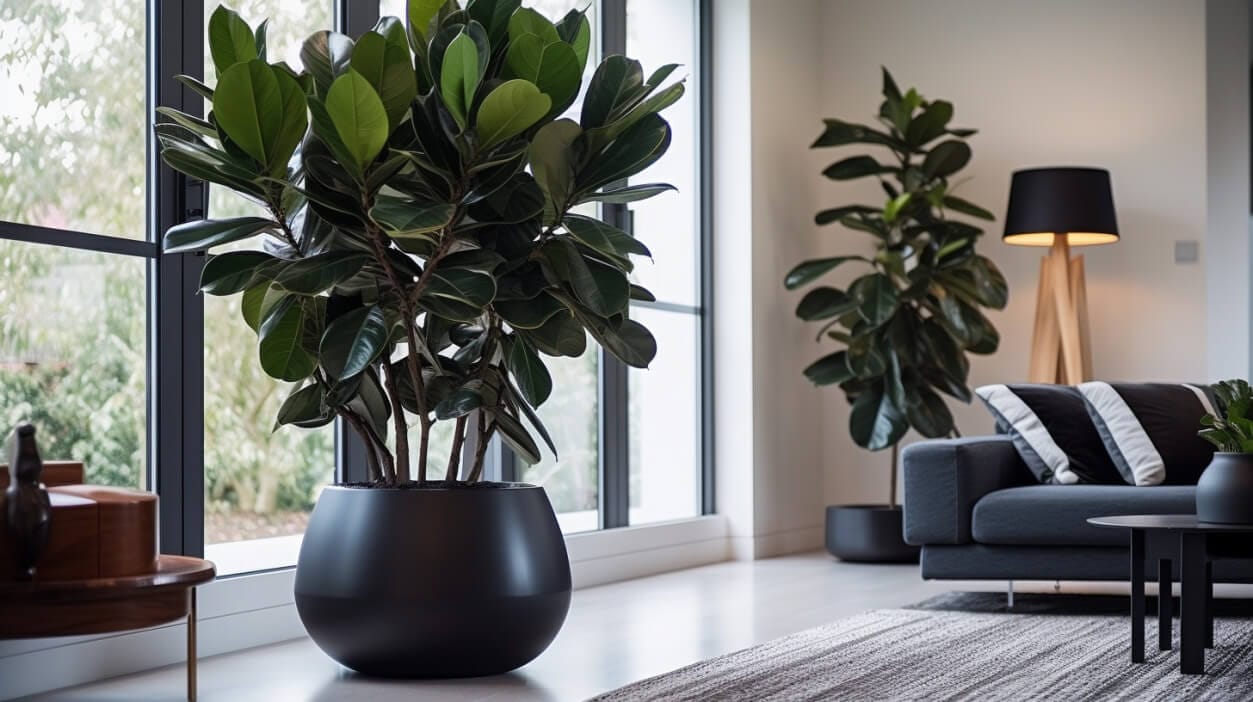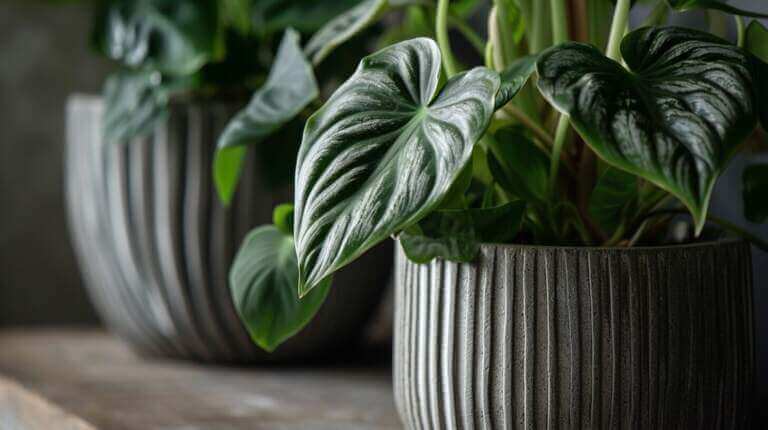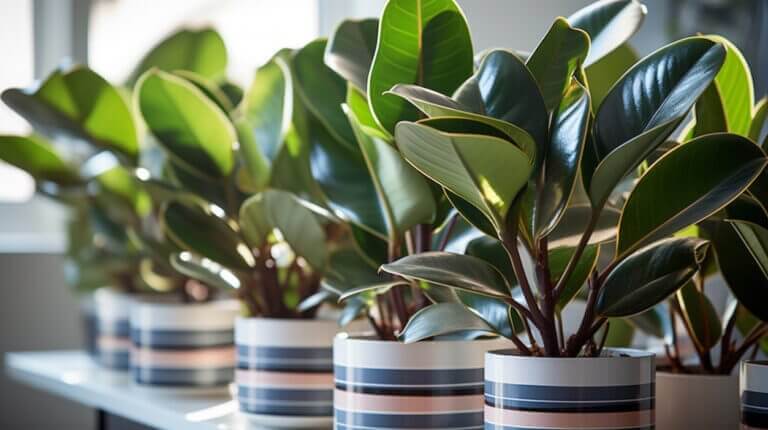How To Make A Rubber Plant Bushy: 5 Useful Tips To Prune a Rubber Plant
Key Takeaways:
- 🪴 Prune your rubber plant regularly to encourage bushy growth
- ✂️ Use clean, sharp shears or scissors to prune rubber plants
- 🗓 Prune every 2-4 weeks during growing season
- 👍 Remove leggy stems and prune just above leaf nodes
- 🌱 Pinching off tips encourages branching and bushiness
- 💚 Give rubber plants bright, indirect light to thrive
- 💧 Water when top inch of soil is dry to keep rubber plants happy
- 👶 Take stem cuttings to propagate more bushy rubber plants
Understanding the Growth of a Rubber Plant
As a proud plant parent of a rubber plant, you may be wondering how to make it become bushier plant and more vibrant. Luckily, there are a few simple tips and tricks to help you achieve those desired results for your indoor plant.
Factors that affect the growth of a rubber plant
- Light: Rubber plants thrive in bright indirect light. Place your plant in a spot where it can receive ample sunlight without being exposed to direct rays that could scorch its leaves.
- Watering: Overwatering can lead to root rot and hinder the growth of your rubber plant. Allow the top inch of soil to dry out before watering again. Make sure to drain excess water from the pot to prevent waterlogged roots.
- Humidity: Rubber plants love high humidity levels. Use a humidifier or keep your plant next to a tray of water to increase the humidity in its environment. Misting the leaves occasionally can also help.
- Temperature: Rubber plants prefer temperatures between 60°F and 80°F (15°C to 27°C). Avoid exposing your plant to drafts, extreme temperatures, or sudden temperature fluctuations as it can damage the plant and slow down growth.
How to assess whether your rubber plant needs pruning
- Leggy growth: If your rubber plant has long, thin stems with sparse foliage at the bottom, it may benefit from pruning. Trimming back leggy growth promotes branching and encourages a fuller appearance.
- Yellowing or withering leaves: Pruning yellowing or withering leaves can help redirect energy to healthier foliage, making your rubber plant look more lush and bushy.
- Overcrowding: If your rubber plant has become overcrowded and dense, light may not be reaching the lower leaves. Pruning back some of the foliage can promote air circulation and ensure even growth throughout the plant.
Tip 1: Removing the Top of the Plant
How removing the top stimulates branching
When it comes to making a rubber plant bushy, one effective technique is to remove the top of the plant. This stimulates branching, which means more growth and a fuller appearance. By removing the top, you encourage the plant to redirect its energy from vertical growth to lateral growth, resulting in bushier foliage.
Step-by-step guide on how to remove the top of a rubber plant
1. Locate the top of the rubber plant stem that you want to remove. Look for a healthy, strong stem that is growing upright.2. Using clean, sharp pruning shears, make a clean cut just above a node, which is a small bump on the stem where new growth occurs. The node should be about 1/4 to 1/2 inch long.3. Ensure the cut is clean and smooth, without any jagged edges. This promotes faster healing and reduces the risk of disease.4. Place the removed top in water to encourage root development. Once roots have grown, you can transfer it to a well-draining potting mix.5. Monitor the remaining plant and observe new growth at the nodes below the cut. You should start seeing new branches sprouting within several weeks.
Tip 2: Pruning Out-of-Place Branches
When it comes to making your rubber plant bushy and thriving, pruning is an essential step. Pruning helps to remove any out-of-place branches and encourage new growth, giving your plant a fuller and more attractive appearance. Here are some useful tips on how to prune your rubber plant effectively:
Identifying branches that need to be pruned
Before you begin pruning, take a close look at your rubber plant and identify any branches that are growing in undesirable directions or are too long. These branches may be obstructing the overall shape of the plant or blocking light from reaching the lower parts. You should also watch out for any diseased or damaged branches that may affect the health of the plant. By identifying these branches, you can ensure that your pruning efforts are targeted and beneficial.
Proper pruning techniques for rubber plants
To effectively prune your rubber plant, follow these techniques:
- Use clean and sharp pruning shears: Make sure your pruning shears are clean and sharp to avoid causing any damage to the plant. This will also ensure a clean cut, which promotes faster healing.
- Cut at a 45-degree angle: When removing a branch, make a clean cut at a 45-degree angle, just above a leaf node or bud. This angled cut will encourage new growth in the right direction.
- Remove one-third to half of the branch: To encourage bushiness, remove one-third to half of the length of the branch. This will stimulate the growth of new branches from below, making your rubber plant fuller and bushier.
- Prune during the growing season: It is best to prune your rubber plant during the growing season, which is typically in spring or early summer. This allows the plant to recover quickly and promotes new growth.
- Use pruning paste (optional): To protect the plant from diseases and pests, you can apply a thin layer of pruning paste to the cut ends of larger branches. This helps to seal the wound and prevent any potential infections.
Tip 3: Controlling the Height of the Plant
Why controlling height is important for bushiness
When it comes to making your rubber plant bushier, controlling its height is crucial. If the plant grows too tall with long, bare stems, it can give a lanky appearance and reduce the overall bushiness. By managing the height, you can encourage the plant to grow more side branches, resulting in a fuller and more compact shape.
How to prune a rubber plant to achieve the desired height
- Trimming: Start by trimming the top of the plant to the desired height. Use sharp, clean pruning shears to make clean cuts just above a leaf node. This will encourage new growth and branching below the cut.
- Pinching: Pinch off the topmost leaves of the plant to further promote branching. This will redirect the plant’s energy towards growing side shoots, making it bushier.
- Removing leggy growth: Identify any long, bare stems without leaves and prune them off. This will eliminate the lanky appearance and encourage the plant to focus on growing more dense foliage.
- Regular pruning: To maintain the desired height and bushiness, make it a habit to prune back any excessive growth. This will prevent the plant from becoming too tall and sparse.
- Provide support: As your rubber plant grows and becomes bushier, it may need support to prevent it from toppling over. Use stakes or a plant trellis to support the branches and keep the plant upright.
Tip 4: Provide Adequate Light
Rubber plants thrive in bright, indirect light. Insufficient light can cause leggy growth, with sparse foliage at the bottom. Ensure your plant receives enough light by placing it near a window with filtered sunlight or using grow lights if natural light is limited.
Tip 5: Proper Watering
Overwatering can lead to root rot, while underwatering can cause the rubber plant to become leggy and weak. It’s crucial to strike a balance by allowing the top inch of soil to dry out before watering thoroughly. Use a well-draining potting mix and ensure the pot has drainage holes to prevent waterlogging.
FAQs
How can I make a rubber plant bushy?
To make your rubber plant bushy, you can prune it regularly and propagate new plants from cuttings.
What is the best way to prune your rubber plant?
The best way to prune a rubber plant is to cut back leggy stems and branches to encourage new growth. Use clean, sharp pruning shears and make the cuts just above a leaf node.
How often should I prune a rubber tree plant?
It is recommended to prune your rubber plant once every few months to keep it healthy and bushy.
Can I propagate a rubber plant to make it bushier?
Yes, you can propagate a rubber plant by taking stem cuttings and rooting them in water or moist soil. This will help you create new plants and make your rubber plant bushier.
How do I prevent rubber plant sap from dripping?
To prevent rubber plant sap from dripping, make sure you make clean cuts when pruning the plant. You can also wipe away any sap with a clean, damp cloth immediately after pruning.
Is it possible to make an indoor rubber plant bushier?
Yes, it is possible to make an indoor rubber plant bushier by following proper pruning techniques and providing the plant with the right care, such as adequate light and proper watering.
What part of the rubber plant should I prune to encourage bushier growth?
To encourage bushier growth, you should prune the leggy stems and branches of the rubber plant. Cutting them back will stimulate new growth and make the plant bushier.
Can pruning rubber plant makes it grow taller?
Pruning can help your rubber plant grow taller by directing its growth upwards. By removing lower branches and leaves, you can encourage vertical growth in your rubber plant.
How can I make my rubber plant more compact ?
To make your rubber plant more compact, you can pinch back the tips of the stems occasionally. This will encourage branching and create a fuller, bushier appearance.
What should I do if my rubber plant becomes too leggy?
If your rubber plant becomes too leggy, you can prune it back by cutting off the leggy stems close to the base of the plant. This will help promote new growth and make the plant bushier.







